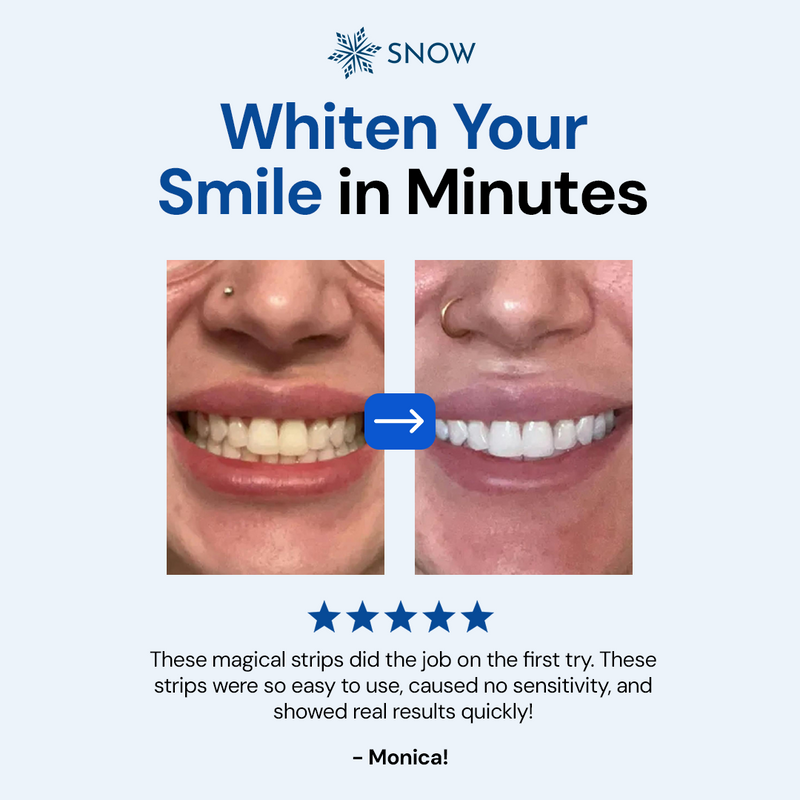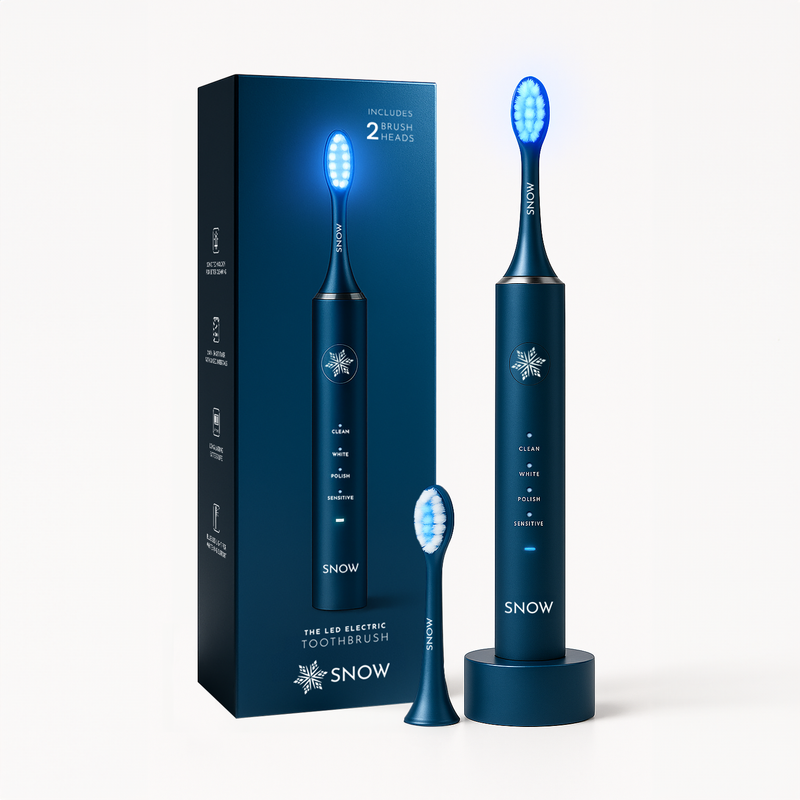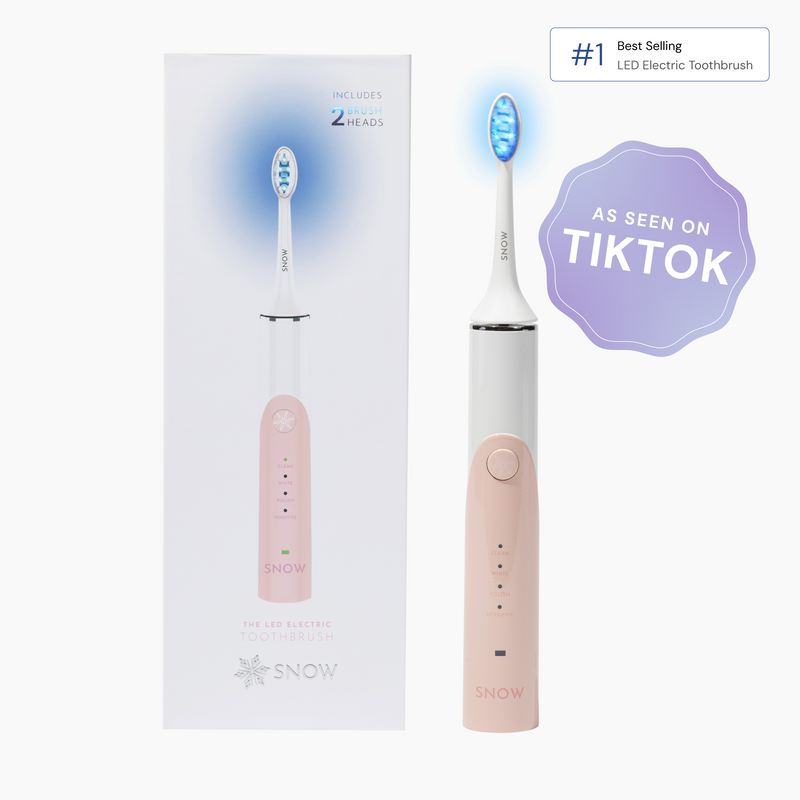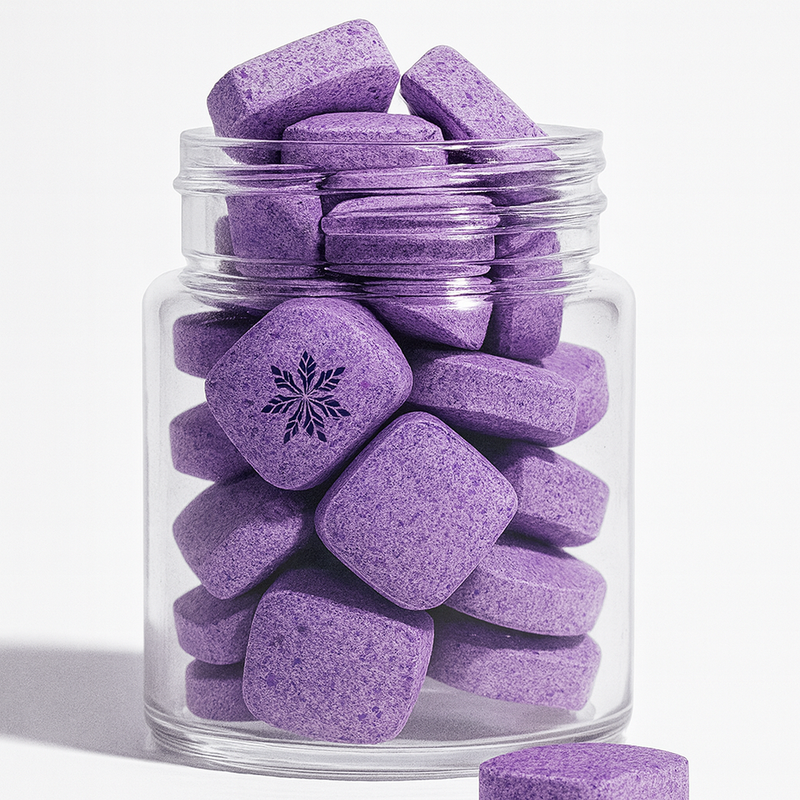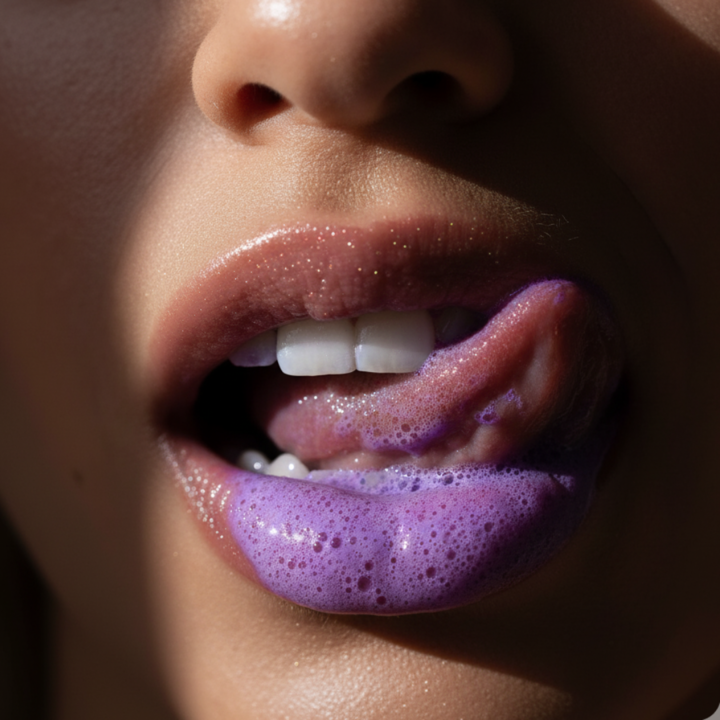OVERVIEW
Tooth decay occurs when the tooth's surface or the enamel is damaged. When bacteria in your mouth accumulate, it can lead to cavities, also known as dental caries, and it can also lead to tooth decay. Cavities are tiny holes on the tooth's surface that vary in size.
Dental caries are most often caused by bacterial buildup, over-consuming sugary foods and drinks, and poor oral hygiene. A cavity is early tooth decay that should be treated immediately with dental fillings.
Cavities are extremely common. According to the Centers for Disease Control and Prevention, over 90 percent of adults aged 20 and over have had at least one cavity and 1 in 4 adults from the ages of 20 to 64 currently have at least one cavity. Even though cavities are most prevalent amongst adults, babies, teenagers, and the elderly can still get them as well.
If left untreated, dental caries can further the tooth decay process and cause issues such as severe tooth pain, infection, and potential tooth loss. Visiting your dentist regularly and having a good oral health routine that includes frequent brushing and flossing is one of the best ways to prevent tooth decay and cavities.
SYMPTOMS
The symptoms of dental caries vary depending on the severity of tooth decay. Some people may not experience any symptoms at all.
However, as tooth decay advances there are common symptoms and signs to look out for:
- White, brown, or black tooth stains and spots
- Toothache or sharp pains
- Tooth sensitivity triggered by hot, cold, or sweet foods
- Chewing pain when biting down on firmer foods
- Small holes or craters in your teeth
- Abscess (pocket of pus) caused by an infection
- Fever
- Facial swelling
- Halitosis
WHAT CAUSES TOOTH DECAY?
Every day our mouths are filled with harmful bacteria. These bacteria mix with the foods and drinks we consume and form plaque. Dental plaque is a soft sticky film that coats the teeth. Bacteria that are found in plaque then develop acids that erode the minerals on the tooth's enamel. As plaque builds, it then hardens into tartar.
As tooth decay progresses and your enamel keeps losing minerals, a cavity forms. A cavity starts as a white spot indicating where minerals have been lost. If a cavity advances enough to form a hole, it'll need to be filled by a dentist to prevent further dental decay.
COMMON CAUSES OF TOOTH DECAY
There are several risk factors and causes when it comes to tooth decay. Below are a few of the most common.
PLAQUE BUILDUP
When dental plaque builds up in your mouth it causes acids to eat away at your tooth enamel. When the enamel becomes damaged enough, cavities form and the bacteria continue to decay the tooth. Bacteria can eventually reach dentin, which is a tender bone-like material beneath the enamel. Dentin is not as equipped to fight bacteria.
At this stage, the tooth decay may begin to advance at a faster rate and may even reach the nerve or bone, or cause a tooth abscess.
Since plaque is stubborn, it's important to visit your dentist regularly to have plaque and tartar professionally removed. The degree to which people accumulate dental plaque varies by individual. Schedule professional cleanings regularly to avoided decayed tooth tissue.
POOR ORAL HYGIENE
Poor oral hygiene can lead to a variety of issues. Bad habits such as not brushing your teeth regularly or flossing can lead to decay-causing bacteria building up in your mouth. Poor dental hygiene can also lead to other issues such as halitosis, gum disease, receding gums, and heart disease.
According to the American Dental Association, it's best practice to brush your teeth at least twice a day, floss daily, and use fluoride toothpaste. A good oral hygiene routine is one of the best ways to prevent cavities and tooth decay.
DRY MOUTH
Dry mouth also referred to as xerostomia, is a condition where the salivary glands in your mouth do not produce enough saliva to keep your mouth wet. Saliva helps prevent tooth decay by neutralizing acids and bacteria in your mouth. A shortage of saliva can negatively affect the health of your teeth and gums.
Common causes of dry mouth include certain medications, aging, chemotherapy, smoking, tobacco use, and recreational drug use.
ACID REFLUX
Acid reflux, also known as heartburn or gastroesophageal reflux disease (GERD), is a condition that causes a burning sensation in the lower chest area. Over 60 million Americans struggle with heartburn and it's more common in Western countries.
Your stomach produces strong acids to break down and digest food. When a person has acid reflux, that acid flows up into the esophagus and sometimes up into the mouth. When stomach acid makes its way up into your mouth, it can cause tooth decay and erosion of the enamel.
When enamel weakens, it increases your risk of getting dental caries, tooth decay, and discoloration. If the enamel is fully lost, you can't get it back. To fix tooth erosion most people may need a dental crown, root canal, fillings, or tooth removal. Your dentist or doctor may recommend that you take medication to keep heartburn under control.
SUGARY AND CARBOHYDRATE-RICH FOODS
Dental plaque builds up faster on the teeth when foods and drinks that are high in sugars and carbohydrates are consumed regularly. Frequently eating sugary foods such as ice cream, candy, caramel, and cookies feeds plaque bacteria in your mouth that then produces acids that erode your tooth enamel surface.
High carbohydrate foods such as white bread, potatoes, and pasta break down the starches found in them and turn them into sugar. These foods also tend to be very chewy and paste-like, making them more likely to stick to your teeth and get stuck in between crevices.
FREQUENT SNACKING
Incessantly snacking during the day and chugging sugary sodas or beverages can also cause tooth decay. By constantly snacking, you're overfeeding bacteria in your mouth. Bacteria then builds and produces acids that attack your enamel. It's best to eat nutritious and balanced meals spaced out throughout the day. And if you do eat any sugary or starchy snacks, brush your teeth immediately after.
GENETICS
Though most tooth decay happens due to poor oral hygiene or unhealthy lifestyle habits, some people are genetically predisposed to getting cavities more easily. According to recent research, an estimated 60 percent of tooth decay may be due to genetics.
Genetics contribute to your enamel structure, saliva, and the shape of your teeth. Some people may have weaker enamel than others and the shape or positioning of their teeth may naturally lend themselves more easily to plaque buildup. Scientists have also discovered that certain people may be genetically inclined to be more addicted to sweets.
So if you're wondering why your candy-loving friend never gets a cavity, but you seem to always be at the dentist, it could be your genetics.
EATING DISORDERS
Eating disorders such as anorexia (self-starvation) and bulimia (binging, compulsive eating, vomiting) can cause severe dental health issues. According to the National Eating Disorder Association, 89 percent of people with bulimia have signs that show up in the mouth.
Eating disorders may permanently damage your teeth and gums. Malnutrition can cause a deficiency in calcium, Vitamin D, and iron. Your body needs calcium for strong bones and teeth, without it your teeth may become loose and even fall out. Vitamin D also helps keep your immune system strong and helps prevent gum disease. Eating disorders can also cause dry mouth, excessive stomach acid, and reflux.
If a bulimic person self-induces vomiting, the harsh acids can erode tooth enamel and increase the risk of tooth decay. If you're struggling with an eating disorder, fluoride treatments can help restore your enamel. Your dentist can also provide guidance and advice for protecting your teeth.
BABY BOTTLE TOOTH DECAY
Baby bottle tooth decay also referred to as infant caries or early childhood caries, is a condition where infants and young children develop tooth decay. This happens more commonly to the top teeth, though the bottom teeth can be affected as well.
One of the most common reasons for baby bottle tooth decay is prolonged exposure to sugary drinks, especially before bedtime. Before bedtime, bottles filled with milk or juice allow sugars to consistently coat the teeth. Early tooth decay in infants and children should be prevented as it could affect the way their adult teeth come in.
According to the National Institute of Dental and Craniofacial Research, you can interrupt and even reverse the tooth decay process to keep your child from getting cavities.
When your infant's teeth come in, it's best to brush them gently with a special toothbrush and fluoride toothpaste. This and lowering the intake of sugary drinks, will help prevent cavities in baby teeth.
ORAL PARAFUNCTIONAL HABITS
Oral parafunctional habits such as teeth grinding (also known as bruxism) or clenching are habits that can stress or damage the teeth. Parafunctional habits are habits where the teeth are used for an uncommon or unintended purpose. Examples include nail-biting, chewing ice cubes, grinding, or opening hard objects with your teeth. Over time, these habits can lead to tooth decay.
Poor oral habits can wear your teeth down causing cracks, chipped teeth, or jaw pain. Oral parafunctional habits are sometimes caused by anxiety, depression, or trauma.
DIAGNOSIS
For a professional diagnosis, you'll need to visit a dentist to find out if you have tooth decay or dental caries. Your dentist will perform a thorough exam where he or she will check your teeth, gums, and take X-rays.
TREATMENT
There are many treatments for tooth decay. The dental treatment you need depends on the severity of your condition. Here are common treatments that your dentist may recommend for tooth decay.
FILLINGS
Dental fillings are designed to treat and restore damaged teeth. Fillings also help prevent tooth decay by stopping bacteria from traveling further into the tooth.
Fillings are made of a variety of materials such as amalgam, composites/resins, metals such as gold or silver, porcelain, and glass ionomer (a mix of acrylic and glass). Sturdier materials may be used on the back teeth.
Fillings are usually performed by a dentist or dental hygienist. Depending on the severity of the cavity, your teeth and gums may be numbed to avoid tooth pain. A dental professional will then drill out the decayed tooth tissue and replace it with a filling. You may experience tooth sensitivity afterwards but thankfully discomfort subsides within a few hours or days.
FLUORIDE TREATMENT
Fluoride treatments can help strengthen and repair your enamel. Stronger enamel protects your teeth against plaque buildup and bacteria. If your cavity is new, the damage can sometimes even be reversed if treated early.
The minerals found in fluoride help prevent dental caries and tooth decay. Professional fluoride treatments performed by a dentist have a higher concentration of fluoride. These treatments may come in the form of a gel, liquid, foam, or varnish and they may be done with a brush, swab, mouthwash, or dental tray.
The American Dental Association recommends treatments every six to twelve months depending on your oral health. Most treatments take a few minutes and are often covered by health insurance.
ROOT CANAL
You may need a root canal if tooth decay advances to the innermost layer of the tooth, known as the pulp. The pulp is where the nerve of your tooth lives. When tooth decay reaches this level of damage, a root canal is performed to save the tooth from being extracted.
Decayed tooth tissue and bacteria is removed and then the canals are filled with permanent filling. The teeth and gum area are numbed with local anesthetic to prevent you from feeling nerve pain. A root canal procedure usually involves little to no pain. However, people may experience soreness, tenderness, or tooth sensitivity after the procedure. If there's an infection, medication may be applied directly to the area and your dentist may also prescribe you antibiotics.
Root canals are considered a safe and effective method of stopping tooth decay. They have a high success rate and may last five to ten years. There is a small chance that the root canal may fail. A good way to prevent the chances of this happening is to implement a good oral health routine.
TOOTH EXTRACTION
If tooth decay advances to a severe level, it may need to be extracted. If the tooth is too decayed to be repaired, a dentist or oral surgeon will need to pull the tooth. A tooth may need to be removed due to overcrowding, infection, for orthodontia, or gum disease.
There are two types of tooth extractions, a simple extraction and a surgical extraction.
A simple extraction is the removal of an exposed tooth with local anesthesia and dental forceps.
A surgical extraction is a more complicated procedure that is commonly performed by an oral surgeon (though some dentist's can perform them too.) This procedure is necessary if the tooth is broken or below the gum line. The tooth will need to be surgically removed through an incision.
A stubborn tooth may need to be extracted in pieces. When the tooth is pulled your dentist will then pack the socket with gauze to stop bleeding and may place a few self dissolving stitches to keep the socket from opening up.
Once the procedure is over, recovery may take a few days to a few weeks. You may experience swelling and light pain. Your dentist may also prescribe pain medications and antibiotics to reduce your risk of infection.
DENTAL CROWNS
For severe tooth decay, dental crowns may also be an option. Dental crowns are permanent 'caps' that are placed over a weak or damaged tooth. They help protect and restore the shape and strength of your teeth. They're made out of materials such as porcelain, metal, gold, silver, ceramic, or composite resin.
This procedure is simple and usually requires one to three visits to the dentist. The damaged tooth is shaped to fit a custom dental crown and then the crown is cemented on top of your natural tooth. On average, a crown will last five to fifteen years. A good oral hygiene routine will help your crown last longer. That, and avoiding oral parafunctional habits such as nail biting, grinding, or opening items with your teeth.
HOW TO PREVENT TOOTH DECAY
There are many ways to take care of your teeth and prevent tooth decay. One of the best ways to keep your teeth healthy and strong is to practice daily habits that set you up for success. Here are some ways to keep your pearly whites in tip top shape.
BRUSH WITH A FLUORIDE TOOTHPASTE
Fluoride has minerals that keep your teeth strong and prevent tooth decaying bacteria from building. Brushing with a fluoride toothpaste combined with a good oral health routine is a great way to prevent tooth decay.
The American Dental Association recommends that you brush your teeth twice a day, ideally in the morning and before bedtime. Take your time to get rid of the day's bacteria, remove plaque, and prevent your chances of gingivitis. Remember, once plaque hardens it can lead to more severe tooth decay.
PRACTICE GOOD ORAL HYGIENE
Have a strong oral health routine. This involves brushing your teeth daily, flossing, and using a mouthwash preferably with fluoride. If you're more prone to cavities, you may need to brush your teeth after every meal.
VISIT YOUR DENTIST REGULARLY
Regular dental checkups and professional cleanings are essential for catching early tooth decay or preventing it altogether. Even if your mouth feels fine and you're not experiencing symptoms, it's good to get your annual oral checkups. You may not be aware that tooth decay or dental caries are forming.
Your dentist can also provide guidance and recommendations for an oral health routine that works best for you.
DRINK TAP WATER
According to the Centers for Disease Control and Prevention, almost all tap water contains naturally occurring fluoride. Through the process of community water fluoridation, local water supply is adjusted to a level known to reduce the risk of tooth decay and improve oral health.
Drinking 8 ounces of filtered tap water a day provides you with fluoride and essential minerals. In case you're wondering, yes, tap water is perfectly safe to drink as long as it has been properly filtered. The United States has some of the safest water systems in the world. To find out what's in your tap water, research locally for more information on water quality and request reports.
Unfortunately, most bottled water does not have a sufficient amount of fluoride to prevent tooth decay. To reap the full fluoride benefits, switch to drinking tap water.
AVOID HARMFUL FOODS
It's best to avoid foods and drinks that encourage decay causing bacteria to build up inside your mouth. Sugary and starchy foods should be eaten in moderation. Avoid sticky sweets such as caramels or toffee. If you can't resist sweets, opt for options that are safer for your teeth.
In an article about Halloween candy, the American Dental Association states that chocolate is a safer choice since it's easier to wash off.
"Chocolate is one of the better candies because it washes off your teeth easier than other types of candy." - Dr. Ferraz-Dougherty, DMD
LIMIT SNACKING AND EAT NUTRITIOUSLY
You'll also want to stay away from (or heavily limit) carbonated drinks, sugary sports drinks, and naughty foods.
Instead, eat nutritious and balanced meals and limit snacking as well. Snacking too often overexposes the tooth surface to food particles that can turn into acids and plaque that lead to further decay.
Choose your snacks and meals wisely. Opt for vitamin-rich and teeth friendly foods such as apples, spinach, avocados, salmon, cucumbers, carrots, green tea, and sugar-free foods. Choosing healthier food options may prevent tooth decay and lower your chances of gum disease.
TAKE YOUR VITAMINS
Your teeth and gums need essential nutrients to thrive. Nutrient deficiencies can lead to poor oral health issues such as tooth loss, periodontal disease, and inflammation. Taking the right vitamins and supplements keep your gums and teeth healthy. You can also research foods that carry these nutrients and implement them into your diet.
Here are some of the best vitamins for your teeth:
-
Calcium: Calcium is a mineral that strengthens your teeth and enamel (the hard outer shell of your teeth), this helps protect your teeth against dental caries and decay. Foods high in calcium include milk, cheese, yogurt, fish, and seeds.
-
Phosphorus: Phosphorus helps your body absorb calcium and strengthen your teeth. Phosphorus-rich foods include meat, fish, eggs, and whole grains.
-
Vitamin A: Vitamin A helps your body absorb Vitamin D and is also great for your eyes and skin. It also helps with saliva production which is great for keeping dry mouth at bay. Foods high in Vitamin A include sweet potato, carrots, kale, and liver.
-
Vitamin C: Vitamin C helps prevent tooth decay, bleeding gums, and keeps your immune system strong. Foods with Vitamin C include sweet potatoes, tomatoes, oranges, Brussel sprouts, and cantaloupe.
-
Vitamin D3: Vitamin D3 helps prevent gingivitis, cavities, and periodontal disease. It also helps with tooth mineralization and helps your body absorb calcium and phosphorus. Vitamin D-rich foods include eggs, milk, salmon, tuna, and fortified foods.
WATCH YOUR CITRUS INTAKE
Highly citrusy and acidic foods such as lemons, limes, oranges, and grapefruits should also be enjoyed in moderation. Citrusy foods can erode enamel and make your teeth more susceptible to tooth decay and dental caries over time.
A squeeze of lemon juice in your water every now and then is fine. Just be careful not to over indulge. Citrusy foods can also aggravate the gums and papillae (the bumps on your tongue.)
DENTAL SEALANTS
Dental sealants are a thin coating (made of plastic and dental materials) that are painted on the chewing surfaces of the back teeth to prevent tooth decay and dental caries. Sealants protect the chewing surfaces of your teeth by creating a protective layer that shields from bacteria and food.
According to the CDC, dental sealants protect teeth against 80% of cavities for 2 years and 50% of cavities for 4 years. Sealants can last as long as 10 years but they may need to be checked and touched up periodically by your dentist.
The dental sealant process is quick and painless and is performed by a dental professional. Sealants are most prevalent amongst children and teens since they're more prone to dental caries, however adults can get them too.
FLUORIDE TREATMENT
Fluoride treatment can serve as a preventative measure as well. If you're not getting enough fluoride intake from tap water, a fluoride toothpaste, or mouthwash, your dentist may recommend a professional fluoride treatment.
This treatment may come in the form of a rinse, gel, foam, mouth tray, or varnish. The process take a few minutes and you'll have to avoid foods and drinks for 30 to 60 minutes after the procedure so the fluoride treatment can fully absorb onto your teeth. Your dentist may also prescribe a fluoride mouthwash if you have a higher risk of tooth decay.
Getting fluoride treatments a few times a year can help prevent dental caries and keep your permanent teeth in excellent shape.
STOP SMOKING
Smoking wreaks havoc on your oral health. Smokers have a higher risk of tooth decay, periodontal disease, plaque buildup, and tooth loss. Many habitual smokers struggle with tooth discoloration. Your pearly whites may also become stained and turn yellow or brown over time.
According to the Centers for Disease Control, 40 percent of smokers aged 20 to 64 have untreated tooth decay. 43 percent of adults 65 and older have lost most if not all of their teeth due to heavy smoking.
Smokeless and chewing tobacco are also bad news for your teeth and gum tissue. It's best to avoid all forms of tobacco to prevent tooth decay.
LIMIT YOUR ALCOHOL INTAKE
Beer, liquor, and fancy cocktails are highly packed with sugars and acids, two substances that can encourage early tooth decay and dental caries. Light to moderate drinking is usually harmless, however, if you've entered the realm of heavy drinking it can lead to several oral health issues.
The Centers for Disease Control and Prevention considers excessive alcohol use as 8 or more drinks per week for women, and 15 or more drinks per week for men.
Heavy alcohol consumption can lead to gum disease, stained teeth, and a decrease in saliva production and flow due to body dehydration. A lack of saliva can then lead to dry mouth. Dry mouth creates the perfect environment for gum disease and plaque buildup.
According to a study by the National Center for Biotechnology Information, heavy drinkers are three times more likely to experience permanent tooth loss. They also have higher levels of plaque and a greater probability of tooth decay. It's best to enjoy alcohol sparingly, and when you do, drink water and brush your teeth afterwards.
Frequently Asked Questions
Can you fix tooth decay?
When decay has advanced beyond the initial stage, fillings are the primary repair option. Fillings can be formed of various materials, including tooth-colored composite resins, porcelain, or dental amalgam, which is a composite of many materials.
How do you get rid of tooth decay?
The enamel deteriorates and is eroded with time, resulting in the formation of a cavity. A cavity is permanent damage that a dentist must repair with a filling. A dental hygienist will also need to go in and clean out tooth decay.
What happens if tooth decay is left untreated?
Untreated cavities can cause pain and infections that may lead to dental problems and potential tooth loss. Untreated cavities can lead to abscess (a severe infection) under the gums. Severe infections may even reach the jaw bone.
Is tooth decay a serious problem?
Cavities become bigger and harm deeper layers of your teeth if they are not addressed. They can cause severe dental pain, infection, and tooth loss. Your best defense against cavities and tooth decay is regular dental appointments and proper brushing and flossing routines.
IS TOOTH DECAY REVERSIBLE?
If dental decay is caught in the early stages it may be reversible. The enamel and minerals on the teeth may be restored with a good oral health routine and professional dental treatment. However, if you've already formed a cavity, then that tooth is considered unrepairable.
RESOURCES
Early tooth decay may be difficult to detect. Keep your teeth in top shape with regular visits to the dentist and stay informed with the latest dental care resources.




















































